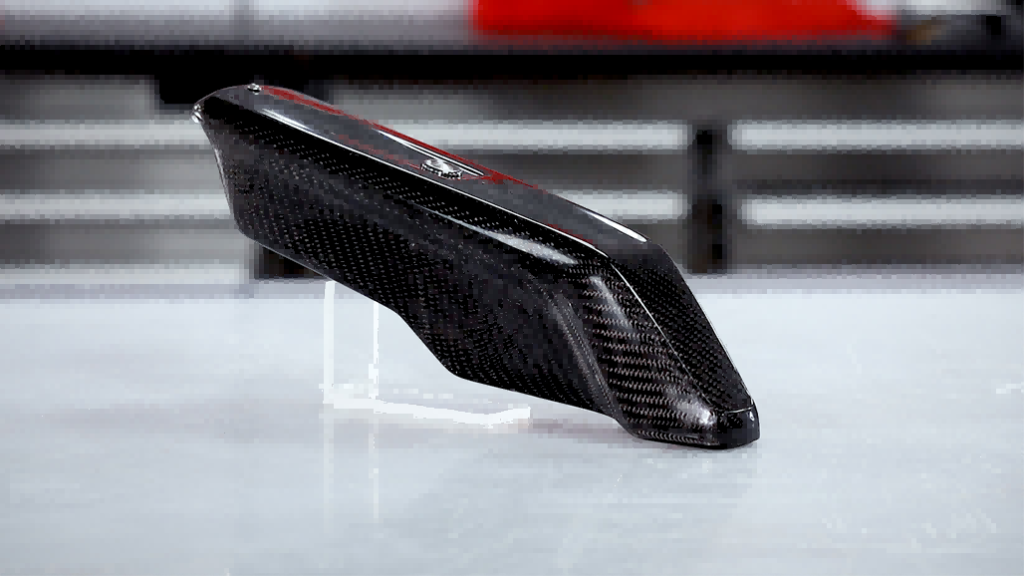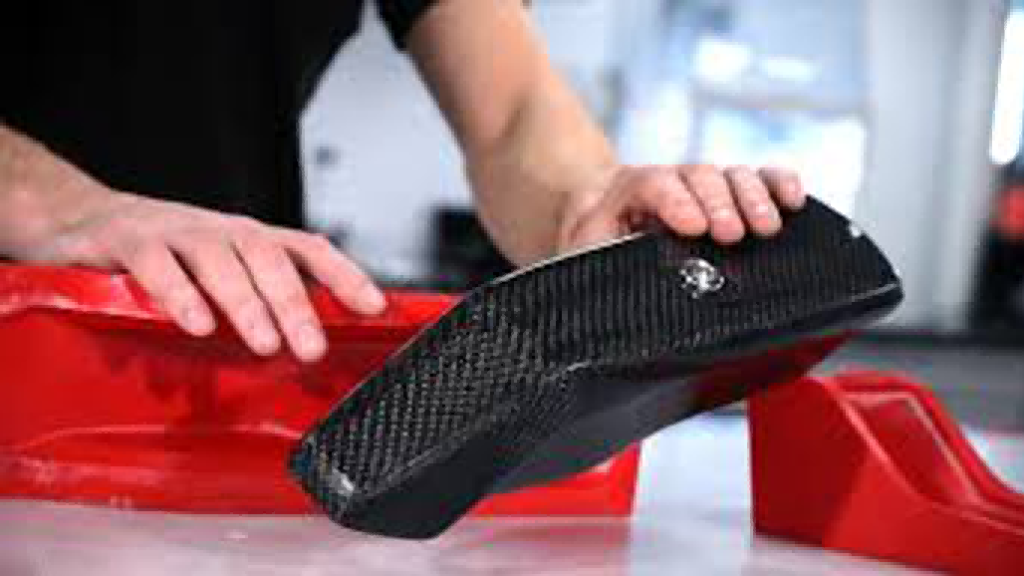What is Carbon Fiber

Carbon fiber, also known as graphite fiber, is a strong and lightweight material that consists of extremely thin strands of carbon.
1、Physical Properties
Carbon fiber is renowned for its exceptional physical properties. It has a high tensile strength, ranging from 2 to 7 GPa.
The tensile modulus is also impressive, around 200 to 700 GPa. With a density of approximately 1.5 to 2.0 grams per cubic centimeter, carbon fiber is extremely lightweight.
For instance, it is lighter than metal aluminum and has a specific gravity less than steel, being less than a quarter of steel’s weight.
However, its strength is significantly higher than that of steel.
The strength-to-weight ratio of carbon fiber makes it an ideal material for applications where strength and lightness are crucial.
Additionally, carbon fiber has a unique thermal expansion coefficient with anisotropic characteristics.
The heat conductivity varies depending on the direction, being negative parallel to the fiber direction and positive perpendicular to it.
2、Chemical Properties
Carbon fiber is chemically stable and shows resistance to corrosion.
It is inert to most alkaline substances and can withstand exposure to common solvents, acids, and bases without dissolving or swelling.
This remarkable chemical resistance makes it an excellent choice for applications in harsh environments.
However, carbon fiber is susceptible to oxidation at high temperatures above 400°C, producing CO and CO₂.
When combined with certain metals like aluminum alloy, electrochemical corrosion can occur due to differences in electrical potential.
Therefore, carbon fiber often requires surface treatment before use to prevent such corrosion.
3、Manufacturing Process
The manufacturing process of carbon fiber is complex and involves several steps.
First, fiber spinning is carried out by mixing the precursor with other materials and spinning it into fibers.
These fibers are then washed and stretched. Pre-oxidation is the next step, where the fibers are chemically altered by heating them in air at around 200 to 300°C for 30 minutes to 2 hours.
This process changes the linear atomic bonds to ladder bonds, enhancing the thermal stability of the fiber.
Carbonization follows, which involves heating the fibers at high temperatures to remove more than half of the non-carbon elements.
Finally, graphitization is performed by heating the fibers to an even higher temperature to convert the carbon into a graphite structure, improving the properties of the carbon fiber.
The Challenge of Foam Mold on Carbon Fiber

Carbon fiber, with its remarkable properties, is widely used in various industries. However, the presence of foam mold on carbon fiber can pose significant challenges.
1、Sources of Foam Mold
Foam mold on carbon fiber can originate from several sources.
During the manufacturing process, improper handling or storage can lead to the accumulation of moisture, which can promote the growth of mold.
Additionally, exposure to humid environments during transportation or storage can also result in the formation of foam mold.
In some cases, contaminants from the surrounding environment can adhere to the carbon fiber surface and provide a breeding ground for mold.
2、Effects on Carbon Fiber
The presence of foam mold can have a detrimental impact on the strength, durability, and other properties of carbon fiber.
Mold can weaken the carbon fiber structure by penetrating the fibers and causing degradation.
This can lead to a reduction in tensile strength and modulus, compromising the material’s ability to withstand mechanical stress.
Moreover, mold can also affect the appearance of carbon fiber, making it less aesthetically pleasing and potentially reducing its market value.
In severe cases, mold can cause corrosion and damage to the carbon fiber, shortening its lifespan and increasing the risk of failure.
For example, in aerospace applications, where carbon fiber is used for its lightweight and high strength properties, the presence of mold can pose a serious safety hazard.
Techniques for Removing Foam Mold

1、Chemical Solutions
Chemical solutions can be an effective way to dissolve foam mold on carbon fiber.
For example, a solution of mild detergent and water can be used to gently clean the surface.
According to research, a solution with a specific concentration of surfactants can help break down the foam mold.
However, care must be taken to ensure that the chemical solution does not damage the carbon fiber.
Some solvents may be too harsh and can cause degradation or discoloration.
It is important to test the solution on a small area first before applying it to the entire surface.
Another option is to use an enzymatic cleaner, which can target and break down the organic matter of the foam mold without harming the carbon fiber.
2、Mechanical Methods
Mechanical techniques such as scraping or sanding can be employed to remove foam mold.
Scraping should be done carefully to avoid scratching the carbon fiber surface.
Special tools with soft edges can be used to gently remove the mold.
Sanding can also be effective, but it should be done with fine-grit sandpaper to minimize damage.
However, mechanical methods may not be suitable for all situations. If the foam mold has penetrated deeply into the carbon fiber, scraping or sanding may not be able to reach it completely.
In addition, mechanical methods can be labor-intensive and time-consuming.
3、Thermal Treatment
Heat can be used to remove foam mold from carbon fiber. Heating the carbon fiber to a specific temperature can cause the foam mold to evaporate or decompose.
For instance, heating to around 200°C can be effective in some cases.
However, extreme care must be taken when using thermal treatment. High temperatures can damage the carbon fiber if not properly controlled.
It is important to monitor the temperature closely and ensure that it does not exceed the safe limit for the carbon fiber.
Additionally, thermal treatment may require specialized equipment and expertise to ensure safe and effective removal of the foam mold.
Considerations and Precautions
1、Safety Measures
When using chemicals to remove foam mold from carbon fiber, safety precautions are of utmost importance.
Chemicals can pose risks such as skin irritation, eye damage, and inhalation hazards.
Protective gear like gloves, goggles, and masks should be worn when handling chemical solutions.
For example, when using a solution of mild detergent and water, it’s important to ensure that the detergent is not too strong and does not emit harmful fumes.
When using heat for removal, there is a risk of burns and fire. Adequate ventilation is essential to prevent the buildup of fumes and to ensure safe operation.
Specialized heating equipment should be used with caution and in accordance with safety guidelines.
2、Material Compatibility
Different types of carbon fiber may have varying compatibilities with different removal methods.
Some carbon fibers may be more sensitive to certain chemicals or temperatures.
For instance, high-performance carbon fibers may require more gentle removal methods to avoid damage. It’s important to consider the specific characteristics of the carbon fiber being treated.
Before applying any removal method, it’s advisable to conduct small-scale tests to determine the compatibility.
For example, testing a chemical solution on a small, inconspicuous area of the carbon fiber can help assess its impact on the material.
3、Long-Term Effects
The removal methods used can have potential long-term effects on the performance of carbon fiber.
Chemicals may leave residues that could affect the material’s properties over time.
According to research on the long-term effects of chemicals, even small amounts of residue can lead to degradation or changes in mechanical properties.
Heat treatment, if not properly controlled, can cause structural changes in the carbon fiber that may reduce its strength and durability.
For example, excessive heat can lead to changes in the carbon fiber’s crystal structure, affecting its tensile strength and modulus.
It’s important to consider these long-term effects when choosing a removal method and to monitor the carbon fiber’s performance after removal to ensure its integrity is maintained.
